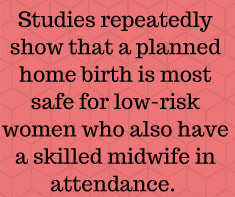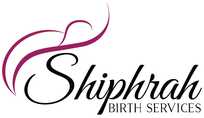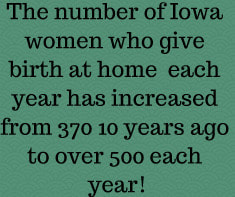Written by Bethany Gates, a Certified Professional Midwife and Certified Doula.
Bethany provides home birth midwifery services, as well as doula services to women giving birth in a hospital setting.

Welcome to Shiphrah Birth Services blog! Last week, we kicked off a series that delves into myths surrounding home births by addressing the myth that home birth is illegal. This week we’re going to jump into another common myth about home birth.
Myth #2: Home birth Isn’t Safe.
This is a much debated topic and, because it is a big topic, this post may become lengthy though I’ll try to be short and sweet while presenting the data.
I want to start with a word about home birth midwives and their training. Most home birth midwives are trained through the apprenticeship model, meaning they have trained for several years with a home birth midwife. They attend prenatal visits, labors, births, and postpartum visits with the midwife from the very beginning of their training. As time goes on and they advance in their knowledge and skills, they move from the assistant midwife role to the primary midwife role, with the midwife supervising. Apprentices also choose to self-study midwifery texts or may enroll in programs with specific plans of study. Many midwives choose to become a Certified Professional Midwife (CPM), which involves showing proof of the specified clinical training requirements. This certification includes proof that you have met the clinical requirements and have passed the 8-hour exam. CPM’s are required to recertify every three years, and must stay current on neonatal resuscitation (NRP) and CPR certifications. CPM’s are also required to show evidence of a specific number of continuing education credits before they can re-certify.
CPM’s are unique because they are the only providers specifically trained in out-of-hospital birth. This means that these midwives need to be especially attuned to the realm of normal, and they are trained to recognize signs that indicate something is moving outside of the range of normal. This knowledge and training is what helps midwives recognize the need to transport the expectant mother from a planned home birth to a hospital setting before an emergency situation happens (it is important to note that most home birth transfers occur due to long labors and the client desiring pain relief. I’ll share more about this when we share the studies). Midwives are trained to manage complications such as hemorrhaging, dystocia, cord prolapse, newborn resuscitation, shock, etc. Midwives in Iowa attend births in pairs, or with a skilled birth assistant who has been trained to manage complications.
When we start talking about home birth safety, I want to note that home birth is not the best option for every woman. Studies repeatedly show that a planned home birth is most safe for low-risk women who also have a skilled midwife in attendance. Women who have high-risk factors would likely be referred to a hospital setting. Unassisted birth, while a choice a woman is free to make, is not statistically shown to be as safe as a midwife-attended birth.
Now on to the studies! The United States has historically relied on home birth studies performed in other countries, due to the comparatively low number of out-of-hospital births that take place in the United States. However, in 2014 a landmark study was released by the Midwives Alliance of North America (MANA) that detailed the safety of planned home births in the United States. This study was performed using data collected from 2004-2009, and totaled a number of 16,924 planned home births.
The main findings are detailed below:
This particular study is the only one of its kind because it’s the only U.S. study that looks just at births that are planned out-of-hospital births. This is a big deal! Just a few years ago, there was a study published that claimed out-of-hospital birth was unsafe, and that the mortality rate was higher than that of births taking place in the hospital. This study was faulty because it relied only on birth certificate data, which meant that it included ANY birth that took place out of the hospital. This meant that planned home births were included in the same numbers as unplanned home births and planned unassisted home births.
The MANA study, however, shows that planned home births of low risk women, attended by CPM’s, are just as safe as hospital births and lead to lower rates of medical intervention. This compares with out of country studies where midwifery care is much more common.
I know not everyone enjoys researching studies, but I hope this has given you more solid information regarding evidence of home birth safety.
Sources:
1. Outcomes of Care for 16,924 Planned Home Births in the United States: The Midwives Alliance of North America Statistics Project, 2004 to 2009 http://onlinelibrary.wiley.com/doi/10.1111/jmwh.12172/full
2. https://www.cdc.gov/nchs/fastats/delivery.htm
3. https://www.ncbi.nlm.nih.gov/pmc/articles/PMC3947469/
4. https://www.cdc.gov/nchs/data/nvsr/nvsr59/nvsr59_05.pdf
5. https://www.cdc.gov/nchs/products/databriefs/db169.htm
Myth #2: Home birth Isn’t Safe.
This is a much debated topic and, because it is a big topic, this post may become lengthy though I’ll try to be short and sweet while presenting the data.
I want to start with a word about home birth midwives and their training. Most home birth midwives are trained through the apprenticeship model, meaning they have trained for several years with a home birth midwife. They attend prenatal visits, labors, births, and postpartum visits with the midwife from the very beginning of their training. As time goes on and they advance in their knowledge and skills, they move from the assistant midwife role to the primary midwife role, with the midwife supervising. Apprentices also choose to self-study midwifery texts or may enroll in programs with specific plans of study. Many midwives choose to become a Certified Professional Midwife (CPM), which involves showing proof of the specified clinical training requirements. This certification includes proof that you have met the clinical requirements and have passed the 8-hour exam. CPM’s are required to recertify every three years, and must stay current on neonatal resuscitation (NRP) and CPR certifications. CPM’s are also required to show evidence of a specific number of continuing education credits before they can re-certify.
CPM’s are unique because they are the only providers specifically trained in out-of-hospital birth. This means that these midwives need to be especially attuned to the realm of normal, and they are trained to recognize signs that indicate something is moving outside of the range of normal. This knowledge and training is what helps midwives recognize the need to transport the expectant mother from a planned home birth to a hospital setting before an emergency situation happens (it is important to note that most home birth transfers occur due to long labors and the client desiring pain relief. I’ll share more about this when we share the studies). Midwives are trained to manage complications such as hemorrhaging, dystocia, cord prolapse, newborn resuscitation, shock, etc. Midwives in Iowa attend births in pairs, or with a skilled birth assistant who has been trained to manage complications.
When we start talking about home birth safety, I want to note that home birth is not the best option for every woman. Studies repeatedly show that a planned home birth is most safe for low-risk women who also have a skilled midwife in attendance. Women who have high-risk factors would likely be referred to a hospital setting. Unassisted birth, while a choice a woman is free to make, is not statistically shown to be as safe as a midwife-attended birth.
Now on to the studies! The United States has historically relied on home birth studies performed in other countries, due to the comparatively low number of out-of-hospital births that take place in the United States. However, in 2014 a landmark study was released by the Midwives Alliance of North America (MANA) that detailed the safety of planned home births in the United States. This study was performed using data collected from 2004-2009, and totaled a number of 16,924 planned home births.
The main findings are detailed below:
- 5.2% cesarean rate for women who planned a home birth (1), compared to the national average of 32% (2).
- 11% intrapartum transfer rate, the majority were transported for Pitocin and/or epidural.
- 87% VBAC rate (1), compared to a national rate of 60-70%.
- 4.5% of women received oxytocin and/or an epidural (1) compared to the estimated national rate of 57% (3) and 61% (4) respectively.
- Early neonatal mortality rate of .41/1,000 (1) compared to the U.S. average of 3.28/1,000 (5).
This particular study is the only one of its kind because it’s the only U.S. study that looks just at births that are planned out-of-hospital births. This is a big deal! Just a few years ago, there was a study published that claimed out-of-hospital birth was unsafe, and that the mortality rate was higher than that of births taking place in the hospital. This study was faulty because it relied only on birth certificate data, which meant that it included ANY birth that took place out of the hospital. This meant that planned home births were included in the same numbers as unplanned home births and planned unassisted home births.
The MANA study, however, shows that planned home births of low risk women, attended by CPM’s, are just as safe as hospital births and lead to lower rates of medical intervention. This compares with out of country studies where midwifery care is much more common.
I know not everyone enjoys researching studies, but I hope this has given you more solid information regarding evidence of home birth safety.
Sources:
1. Outcomes of Care for 16,924 Planned Home Births in the United States: The Midwives Alliance of North America Statistics Project, 2004 to 2009 http://onlinelibrary.wiley.com/doi/10.1111/jmwh.12172/full
2. https://www.cdc.gov/nchs/fastats/delivery.htm
3. https://www.ncbi.nlm.nih.gov/pmc/articles/PMC3947469/
4. https://www.cdc.gov/nchs/data/nvsr/nvsr59/nvsr59_05.pdf
5. https://www.cdc.gov/nchs/products/databriefs/db169.htm


 RSS Feed
RSS Feed